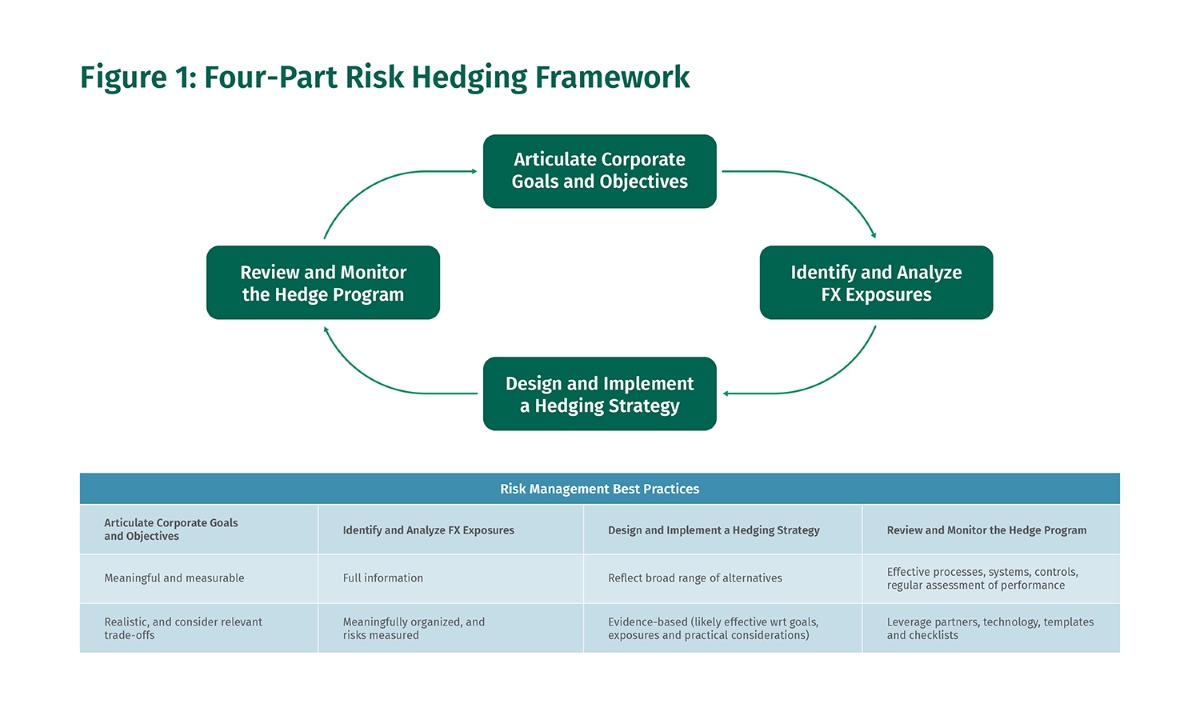

Finance
What Does Lender-Placed Insurance Cover
Published: November 12, 2023
Discover what lender-placed insurance covers and why it's important for your finances. Ensure financial protection with lender-placed insurance.
(Many of the links in this article redirect to a specific reviewed product. Your purchase of these products through affiliate links helps to generate commission for LiveWell, at no extra cost. Learn more)
Table of Contents
- Introduction
- Definition of Lender-Placed Insurance
- Purpose of Lender-Placed Insurance
- Coverage Provided by Lender-Placed Insurance
- Property Coverage
- Liability Coverage
- Additional Coverage Options
- Exclusions and Limitations
- Costs and Fees Associated with Lender-Placed Insurance
- How Lender-Placed Insurance Differs from Homeowners Insurance
- Benefits and Drawbacks of Lender-Placed Insurance
- Conclusion
Introduction
Lender-placed insurance, also known as force-placed insurance, is a type of coverage that is typically obtained by a lender when a borrower fails to maintain adequate insurance on a property used as collateral for a loan. In such cases, the lender purchases a policy on behalf of the borrower to protect their interests in the property.
This type of insurance is typically used for various types of collateralized loans, including mortgages, auto loans, and personal loans. The lender does not purchase the insurance policy to protect the borrower’s interests, but rather to protect their own investment in case of a loss due to damage or liability related to the property.
Lender-placed insurance is designed to provide coverage when the borrower’s insurance policy has lapsed, been cancelled, or is deemed insufficient by the lender. It is a temporary solution that ensures the lender’s interests are protected while the borrower is required to obtain their own insurance.
In this article, we will delve into the definition, purpose, coverage, costs, and other important aspects of lender-placed insurance. Whether you are a borrower or a lender, understanding the ins and outs of this type of insurance is essential for navigating the world of collateralized loans.
Definition of Lender-Placed Insurance
Lender-placed insurance, also known as force-placed insurance, is a specialized type of insurance policy that is purchased by a lender or financial institution on behalf of a borrower when the borrower does not maintain adequate insurance coverage on a property used as collateral for a loan.
When a borrower fails to maintain or provide proof of insurance, lenders have the right to protect their investment by purchasing a lender-placed insurance policy. This policy is typically more expensive than traditional insurance and provides coverage for the lender’s interests, rather than the borrower’s.
The lender-placed insurance policy is obtained through an insurance provider chosen by the lender. The borrower is responsible for paying the premiums associated with this policy, either directly or through an increase in their loan repayment amount.
It is important to note that lender-placed insurance is a temporary solution. The borrower is still responsible for obtaining their own insurance coverage and providing proof of that coverage to the lender. Once the borrower secures adequate insurance, the lender-placed insurance policy can be cancelled or adjusted accordingly.
Overall, lender-placed insurance is a risk management tool used by lenders to protect their investment in collateralized loans. It ensures that the property used as collateral is adequately insured, even if the borrower fails to do so.
Purpose of Lender-Placed Insurance
The primary purpose of lender-placed insurance is to protect the interests of the lender when a borrower fails to maintain adequate insurance coverage on a property used as collateral for a loan. This type of insurance ensures that the lender is protected from financial loss in the event of damage or liability related to the property.
When a borrower fails to maintain insurance or provide proof of insurance, it can create a significant risk for the lender. Without insurance coverage, any damage to the property, such as fire, flood, or vandalism, could result in a loss that the borrower might not be able to repay. Lender-placed insurance acts as a safety net, providing coverage for the lender’s investment.
Lender-placed insurance also protects the lender from potential liability issues that may arise from the property. For example, if a guest is injured on the property and the borrower does not have liability insurance, the lender could be held financially responsible. Lender-placed insurance can provide liability coverage to protect the lender in such situations.
Another purpose of lender-placed insurance is to ensure that the property is adequately insured to maintain its value. If the borrower’s insurance policy lapses or is cancelled, the property becomes vulnerable to potential risks. Lender-placed insurance ensures that the property remains protected, preserving its value as collateral for the loan.
Overall, the purpose of lender-placed insurance is to mitigate the financial risks faced by lenders when borrowers fail to maintain adequate insurance coverage. It provides a safety net for the lender and allows them to protect their investment in the collateralized loan.
Coverage Provided by Lender-Placed Insurance
Lender-placed insurance provides coverage for the property used as collateral for a loan, as well as potential liability issues that may arise from the property. While the specific coverage can vary depending on the insurance provider and the terms of the policy, there are some common types of coverage that are typically included.
Property Coverage: Lender-placed insurance typically provides coverage for the physical structure of the property. This includes protection against damage caused by fire, severe weather events, vandalism, and other perils specified in the policy. The coverage may also extend to attached structures, such as garages or sheds, and any permanent fixtures within the property.
Liability Coverage: Lender-placed insurance may include liability coverage to protect the lender from potential legal claims resulting from injuries or property damage that occur on the premises. This coverage helps to safeguard the lender from financial losses that may arise if the borrower does not have their own liability insurance.
Additional Coverage Options: Depending on the insurance provider and the policy terms, lender-placed insurance may offer additional coverage options. This can include coverage for personal property inside the property, loss of use or additional living expenses if the property becomes uninhabitable, or even coverage for specific hazards that may be unique to the property or location.
It is important to review the specific terms and conditions of the lender-placed insurance policy to understand the extent of the coverage provided. Different insurance providers may offer different coverage options, and it is essential to ensure that the policy adequately protects the lender’s interests.
It is worth noting that lender-placed insurance is focused on protecting the lender’s investment rather than the borrower’s personal belongings or liability. Therefore, if the borrower wants comprehensive coverage for their personal property or liability protection, it is advisable to obtain their own insurance policy in addition to the lender-placed insurance.
Understanding the coverage provided by lender-placed insurance is crucial for both borrowers and lenders, as it helps to determine the level of protection offered in the event of damage or liability related to the property.
Property Coverage
Property coverage is a key component of lender-placed insurance policies. It provides protection for the physical structure of the property used as collateral for a loan. Understanding the details of property coverage is important for both lenders and borrowers to ensure adequate protection and mitigate potential risks.
Lender-placed insurance typically covers a range of perils that can cause damage to the property. These perils may include fire, lightning, windstorms, hail, vandalism, and theft, among others. The specific perils covered will depend on the insurance provider and the terms of the policy.
In the event of damage caused by a covered peril, lender-placed insurance can provide financial assistance for repairs or rebuilding. The coverage amount is typically based on the estimated replacement cost of the property, which represents the cost to rebuild the property with similar materials and features in the event of a total loss.
It is important to note that lender-placed insurance only covers the lender’s interest in the property. It does not typically provide coverage for the borrower’s personal belongings. Therefore, if the borrower wants to protect their personal property against these perils, they will need to obtain their own separate insurance policy.
The specific details of property coverage, such as coverage limits and deductibles, will be outlined in the lender-placed insurance policy. The coverage will typically reflect the requirements set by the lender to protect their investment adequately.
It is crucial for borrowers to understand that lender-placed insurance is a temporary solution and does not eliminate the need for their own insurance policy. Once the borrower obtains their own insurance coverage, they should provide proof of the policy to the lender, who will then cancel or adjust the lender-placed insurance accordingly.
In summary, property coverage provided by lender-placed insurance focuses on protecting the structure of the property used as collateral for a loan. Borrowers should be aware of the specific perils covered, the coverage limits, and the requirement to obtain their own insurance policy to protect their personal belongings. Lenders should ensure that the property coverage adequately safeguards their investment in the collateralized loan.
Liability Coverage
Liability coverage is an important component of lender-placed insurance policies. It provides protection for lenders against potential legal claims and financial losses resulting from injuries or property damage that occur on the premises used as collateral for a loan.
Lender-placed insurance typically includes liability coverage to safeguard lenders from liability issues that the borrower may face. This can include situations such as slip and fall accidents, injuries caused by a faulty property condition, or damage to neighboring properties caused by the property in question.
If a borrower does not have their own liability insurance, lender-placed insurance can help protect lenders from legal and financial obligations that may arise from such incidents. The liability coverage provided by lender-placed insurance may cover legal defense costs, court judgments, settlements, and medical expenses related to the injury or property damage.
The specific coverage limits for liability coverage will vary depending on the insurance provider and the terms of the policy. It is important for lenders to ensure that the liability coverage is sufficient to protect their interests in case of a liability claim.
It is important to note that liability coverage provided by lender-placed insurance is designed to protect the lender’s interests, not the borrower’s. If the borrower wants comprehensive liability coverage to protect themselves from such risks, they should obtain their own separate insurance policy.
Borrowers should also understand that lender-placed insurance is a temporary solution. Once they obtain their own insurance coverage, they should provide proof of the policy to the lender, who will then cancel or adjust the lender-placed insurance accordingly. This will help ensure that the borrower has the appropriate liability coverage.
In summary, liability coverage provided by lender-placed insurance protects lenders from potential legal claims and financial losses resulting from injuries or property damage on the collateral property. Borrowers should be aware of the limitations of lender-placed insurance and consider obtaining their own comprehensive liability coverage. Lenders should ensure that the liability coverage in their lender-placed insurance policy adequately safeguards their investment.
Additional Coverage Options
In addition to property coverage and liability coverage, lender-placed insurance may offer additional coverage options depending on the insurance provider and the terms of the policy. These additional coverage options can provide further protection for both lenders and borrowers in specific situations.
One common additional coverage option is coverage for personal property inside the property used as collateral. This can include coverage for belongings such as furniture, appliances, electronics, and other personal items. It is important to note that this coverage usually applies to items owned by the lender, as it is primarily focused on protecting their interests. Borrowers should consider obtaining their own separate insurance policy to protect their personal belongings.
Loss of use or additional living expenses coverage is another additional coverage option that may be offered. This coverage helps cover the costs of alternative accommodations or additional expenses if the property becomes uninhabitable due to a covered peril. It can provide financial assistance for temporary housing or other necessary costs incurred during the repair or rebuilding process.
Depending on the specific property and its location, lender-placed insurance may also offer coverage for specific hazards or risks associated with the property. For example, if the property is in an area prone to floods or earthquakes, the policy may include coverage for these perils. It is important to carefully review the policy to understand the additional coverage options available and whether they are relevant for the specific property.
It is important to note that the availability of these additional coverage options can vary depending on the insurance provider and the specific terms of the policy. Borrowers should carefully review the policy documents to understand what additional coverage options are included and how they can benefit from them.
It is also worth mentioning that lenders should ensure that the additional coverage options meet their requirements for protecting their investment in the collateralized loan. This may involve assessing the value and potential risks associated with the property and choosing the appropriate coverage options accordingly.
In summary, lender-placed insurance may offer additional coverage options such as personal property coverage, loss of use coverage, and coverage for specific hazards. Borrowers should review the policy to understand the available options, and lenders should ensure that the chosen additional coverage options adequately protect their interests as well.
Exclusions and Limitations
Like any insurance policy, lender-placed insurance comes with certain exclusions and limitations that borrowers and lenders should be aware of. These exclusions and limitations define the circumstances under which coverage may not be provided or may be limited. Understanding these exclusions is crucial for managing expectations and ensuring adequate protection.
Common exclusions in lender-placed insurance policies can include pre-existing damage, intentional acts, acts of war, nuclear events, and certain natural disasters. These exclusions mean that damage or loss caused by these specific events may not be covered by the policy. The specific exclusions will be outlined in the policy documents and should be carefully reviewed by both borrowers and lenders.
Additionally, policy limitations may exist with regard to coverage amounts or specific items. For example, there may be a limit on the total coverage amount provided by the lender-placed insurance policy. This means that if a claim exceeds that limit, the borrower or lender may need to seek additional coverage elsewhere. Similarly, there may be limitations on coverage for certain high-value items or specific types of property.
It is important for borrowers to understand that lender-placed insurance is focused on protecting the lender’s interests rather than the borrower’s personal belongings or liability. Therefore, it is advisable for borrowers to obtain their own separate insurance policies to address these aspects of coverage if they require comprehensive protection.
Furthermore, lenders should ensure that the exclusions and limitations in the lender-placed insurance policy align with their risk tolerance and adequately protect their investment in the collateralized loan. This may involve evaluating the property and its specific risks to determine if additional coverage or endorsements are necessary.
It is worth noting that the specifics of exclusions and limitations can vary between insurance providers and policy terms. Therefore, it is important to carefully review the policy documents and consult with the insurance provider or legal counsel if there are any questions or concerns about the coverage.
By being aware of the exclusions and limitations in lender-placed insurance policies, borrowers and lenders can make informed decisions, manage expectations, and ensure the appropriate level of coverage for their specific needs and circumstances.
Costs and Fees Associated with Lender-Placed Insurance
When it comes to lender-placed insurance, borrowers can expect to bear the costs and fees associated with this coverage. It is important to understand the financial implications of lender-placed insurance to properly plan and budget for these expenses.
The costs of lender-placed insurance can vary depending on several factors, including the type and value of the collateral, the insurance provider, the coverage limits, and the location of the property. In general, lender-placed insurance tends to be more expensive than traditional insurance policies. This is because it is often considered higher risk due to the circumstances that lead to its purchase, such as a lapse in borrower insurance coverage.
Borrowers typically have two payment options for lender-placed insurance. The first option is to pay the premiums for the insurance policy directly to the insurance provider. The premiums may be added to the borrower’s monthly mortgage or loan payment, spreading the cost out over the repayment term. The other option is for the lender to pay the insurance premiums on the borrower’s behalf and add the cost to the loan balance, which can increase the overall loan amount and potentially result in higher interest charges.
In addition to the insurance premiums, there may be other fees and charges associated with lender-placed insurance. These can include administrative fees, inspection fees, and cancellation fees, among others. These fees can vary between insurance providers and should be disclosed in the policy documents.
It is important for borrowers to review and understand the costs and fees associated with lender-placed insurance, as they can have a significant impact on the overall loan repayment. Additionally, borrowers should be aware that the costs and fees for lender-placed insurance may increase over time, as premiums and fees can be subject to adjustment by the insurance provider.
Lenders also have a vested interest in understanding the costs and fees associated with lender-placed insurance. They should ensure that the insurance premiums and fees charged to borrowers align with industry standards and are reasonable for the coverage provided. Lenders should also regularly review any fees charged by insurance providers to ensure they are not excessive or unjustified.
In summary, borrowers should carefully consider the costs and fees associated with lender-placed insurance, as it can impact their loan repayment. Understanding the payment options, premiums, and additional fees involved can help borrowers plan their finances accordingly. Lenders should also be vigilant in reviewing the costs and fees charged to borrowers to ensure they are fair and reasonable.
How Lender-Placed Insurance Differs from Homeowners Insurance
Lender-placed insurance and homeowners insurance are two distinct types of insurance policies that serve different purposes and offer different coverage. Understanding the differences between these two types of insurance is crucial for borrowers and lenders.
1. Purpose: The primary purpose of lender-placed insurance is to protect the interests of the lender when the borrower fails to maintain adequate insurance coverage on a property used as collateral for a loan. On the other hand, homeowners insurance is obtained by homeowners to protect their own interests, including the property itself, personal belongings, and liability coverage.
2. Focus of Coverage: Lender-placed insurance focuses primarily on protecting the lender’s investment in the collateralized loan. It typically covers property damage, liability issues, and potential loss of value of the property. Homeowners insurance, on the other hand, provides comprehensive coverage for the homeowner, including property damage, personal belongings, and liability coverage for injuries or damages that occur on the property.
3. Ownership: Lender-placed insurance is owned and obtained by the lender on behalf of the borrower. The borrower is responsible for paying the premiums. In contrast, homeowners insurance is owned and obtained by the homeowner themselves, who pay the premiums directly to the insurance provider.
4. Cost: Lender-placed insurance tends to be more expensive than homeowners insurance. This is because lender-placed insurance is often considered higher risk due to the circumstances that lead to its purchase, such as a lapse in borrower insurance coverage. Homeowners insurance, on the other hand, is typically based on the property’s value, location, and the level of coverage selected by the homeowner.
5. Coverage Flexibility: Homeowners insurance offers more flexibility in terms of coverage options and customization. Homeowners can choose from various coverage levels and add endorsements or riders to tailor the policy to their specific needs. Lender-placed insurance, on the other hand, offers limited flexibility as it is primarily focused on protecting the lender’s interests.
It is important for borrowers to understand that lender-placed insurance is a temporary solution and does not eliminate the need for their own homeowners insurance policy. Once the borrower obtains their own insurance coverage, they should provide proof of the policy to the lender, who will then cancel or adjust the lender-placed insurance accordingly.
Lenders should also be aware of the differences between lender-placed insurance and homeowners insurance to ensure that their interests are adequately protected. They should carefully evaluate the terms and coverage of the lender-placed insurance policy to align with their risk tolerance and investment protection needs.
In summary, lender-placed insurance and homeowners insurance serve different purposes and offer different coverage. Lender-placed insurance focuses on protecting the lender’s investment in the collateralized loan, while homeowners insurance provides comprehensive coverage for the homeowner’s property, belongings, and liability. Understanding these differences is essential for borrowers and lenders in navigating the insurance requirements of collateralized loans.
Benefits and Drawbacks of Lender-Placed Insurance
Lender-placed insurance carries both benefits and drawbacks, which borrowers and lenders should consider when evaluating the need for this type of coverage.
Benefits of Lender-Placed Insurance:
- Protects the lender’s interests: Lender-placed insurance ensures that the lender’s investment in the collateralized loan is protected. It provides coverage for property damage and liability issues, mitigating the financial risks faced by lenders.
- Maintains property value: By ensuring that the property used as collateral is adequately insured, lender-placed insurance helps maintain the value of the property. This is important for both borrowers and lenders as it protects the asset’s worth.
- Temporary solution: Lender-placed insurance serves as a temporary solution when a borrower fails to maintain their own insurance coverage. It provides immediate protection for the lender’s interests until the borrower obtains their own insurance policy.
- Simplifies insurance compliance: Lender-placed insurance removes the burden of monitoring insurance compliance from the lender, as the policy is obtained by the lender on behalf of the borrower. This helps ensure that the property remains adequately insured.
Drawbacks of Lender-Placed Insurance:
- Higher cost: Lender-placed insurance is typically more expensive than traditional homeowners insurance. This higher cost is often passed on to the borrower, which can increase the overall loan repayment amount.
- Limited coverage: Lender-placed insurance focuses primarily on protecting the lender’s interests, not the borrower’s personal belongings or liability. Borrowers may need to obtain separate insurance policies to adequately protect their personal assets and liabilities.
- Less flexibility: Compared to homeowners insurance, lender-placed insurance offers limited flexibility in terms of coverage options and customization. It is designed to meet the basic needs of protecting the lender’s investment, and additional coverage for the borrower’s specific needs may not be available or included.
- Temporary solution: While lender-placed insurance provides immediate protection, it is important for borrowers to obtain their own insurance coverage as soon as possible. Relying solely on lender-placed insurance for an extended period can be costly, and borrowers may not have the full benefits and coverage options offered by traditional homeowners insurance policies.
When considering lender-placed insurance, borrowers and lenders should carefully weigh the benefits and drawbacks. It may be a valuable solution for ensuring the ongoing protection of the lender’s investment in collateralized loans, but borrowers should also consider their own insurance needs and explore options beyond lender-placed insurance to ensure comprehensive coverage.
Conclusion
Lender-placed insurance, or force-placed insurance, plays a crucial role in protecting the interests of lenders and borrowers in collateralized loans. It provides coverage for property damage and liability issues when a borrower fails to maintain adequate insurance coverage on the property used as collateral. While lender-placed insurance offers several benefits, including protecting the lender’s investment and maintaining the property’s value, there are also drawbacks to consider, such as higher costs and limited coverage options.
Understanding the differences between lender-placed insurance and homeowners insurance is essential for borrowers and lenders alike. Homeowners insurance provides comprehensive coverage for the homeowner’s property, belongings, and liability, while lender-placed insurance is focused on safeguarding the lender’s interests. Borrowers should also be aware that lender-placed insurance is a temporary solution and does not replace the need for their own insurance policy.
When considering lender-placed insurance, borrowers should carefully review the policy terms, costs, and fees associated with the coverage. It is crucial to budget for these expenses and explore options for obtaining their own homeowners insurance policy to ensure comprehensive protection for their personal assets and liabilities.
Lenders, on the other hand, should consider lender-placed insurance as a risk management tool to protect their investment. They should ensure that the coverage adequately safeguards their interests in the collateralized loan, and review and evaluate the costs and fees charged by insurance providers to ensure they are fair and reasonable.
In conclusion, lender-placed insurance is a necessary component of collateralized loans, providing important protection for both lenders and borrowers. However, borrowers and lenders should carefully consider the benefits and drawbacks of this type of insurance and explore options beyond lender-placed insurance to ensure comprehensive coverage and mitigate any potential limitations. By understanding the nuances of lender-placed insurance and its role in the broader insurance landscape, borrowers and lenders can navigate the complexities of collateralized loans with confidence.














